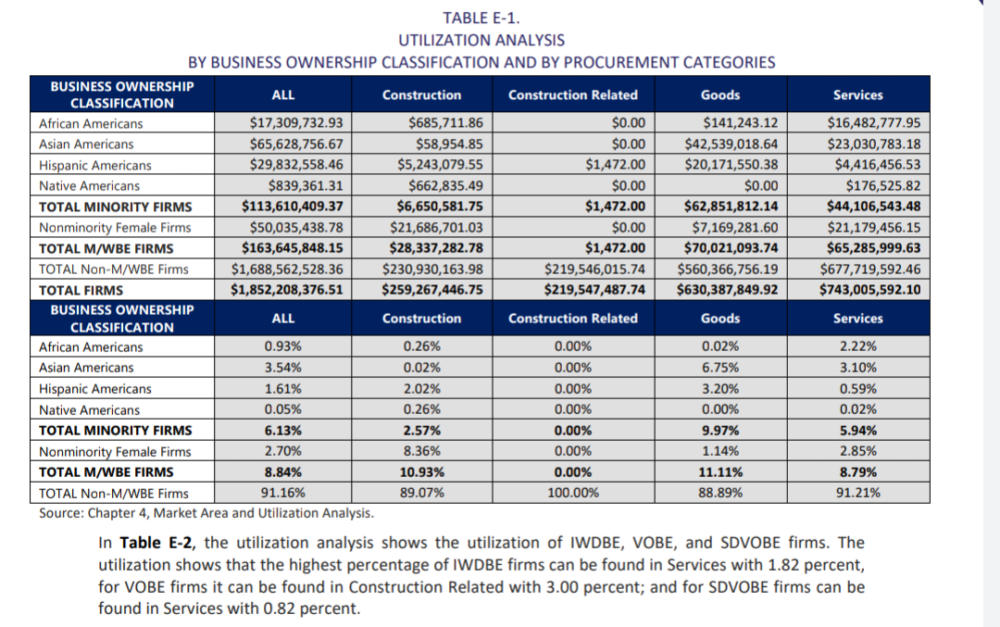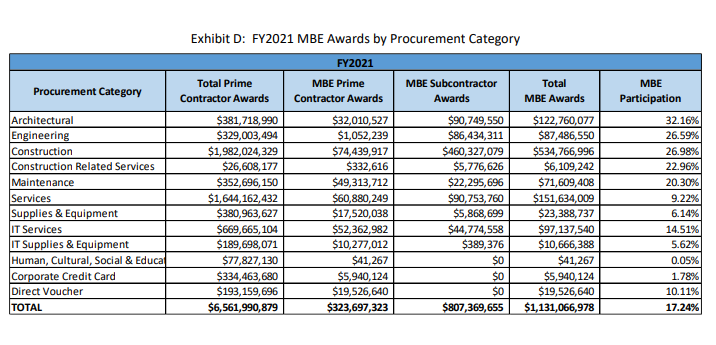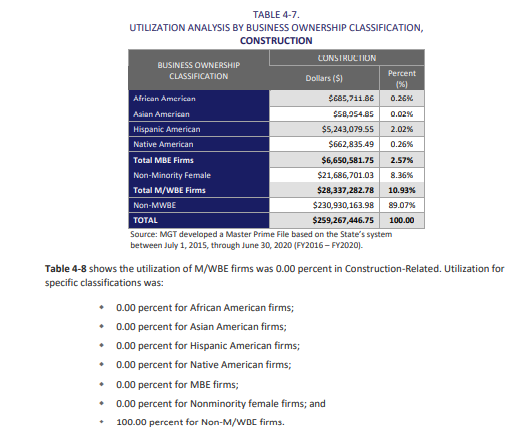Other states are making similar pushes to increase supplier diversity by way of collecting info on owners’ minority status. California, for example, implemented a voluntary minority check box to its business registration process that launched in April, just five months before Delaware added the feature.
The purpose of the check boxes is to increase the number of minority-led small businesses that become certified by the state, making them eligible for supplier diversity initiatives and putting them on a public directory that may be accessed by private companies’ supplier diversity teams.
Maryland, in particular, is notable for comparison to Delaware. Unlike New York and California, it’s a relatively small state. It’s located in the mid-Atlantic, bordering Delaware — in fact, we share a whole peninsula.
Maryland’s population is six times that of Delaware’s, which is just under 1 million. Both Maryland and Delaware have Black populations above 20% (22% in Delaware and 30% in Maryland), and both have diversity indexes around 60% or higher (60% in Delaware and 67% in Maryland).
While population may not directly correlate with the percentage of businesses in relevant industries, at least in theory, Delaware should be doing a similar amount of business with minority companies as Maryland.
In reality, Maryland’s supplier diversity numbers is significantly higher, even when not meeting a stated aspirational goal of 29%: In the most recent reports available, women- and minority-owned businesses in Maryland were awarded 17.2% of the state’s contracts (“overall MBE participation rate,” referring to minority business enterprises). In Delaware, the most comparable number is just shy of 9%.

Table showing Delaware’s 2022 procurement data data. (Image via Delaware’s 2022 report)
Remember the statistic from Delaware’s 2022 disparity report that showed that the percentage of minority businesses involved with state construction-related contracts was zero? And that 100% of businesses that were involved were what is called “non-M/WBE (minority/woman business enterprise),” a particularly roundabout way to say that all of the contracts went to companies owned by white males? In Maryland in 2021, MBEs — received 23% of the state’s construction-related contracts (including Black, Hispanic and Indigenous-owned businesses).
-

Table showing Maryland’s construction contact data. (Image via Maryland’s 2021 report)
In the construction category in 2022, non-minority women-owned businesses in Delaware landed about 8% of the construction contracts (not to be confused with construction-related). Combined with the non-M/WBE percentage in that category of 89%, that brings the non-MBE total to more than 97%, with MBEs awarded just over 2.5%. By contrast, MBEs were awarded 26% of construction contracts in Maryland in 2021.
-

Table showing Delaware’s construction contact data. (Image via Delaware’s 2022 report)
Maryland’s MBE program is based on placing goals and subgoals to ensure diversity in suppliers of state-funded contracts, in addition to a race-neutral “set aside” program that holds a portion of state contracts for small businesses. Although the set aside program in Maryland and some other states is not based on race, giving priority to small businesses can help minority businesses, the majority of which are small businesses, compete for state contracts.
Technical.ly spoke to Alison Tavik, a director at the Maryland Governor’s Office of Small, Minority & Women Business Affairs, to learn more about its supplier diversity programs.
###
Technical.ly: Can you explain the difference between set asides and goals?
Tavik: Maryland’s race- and gender-neutral program, the Small Business Reserve (SBR) Program, has a 15% set-aside for state-funded contracts. This number is defined in statute. The participating agencies are required to make at least 15% of their qualifying purchases directly with certified SBRs. These are prime contracts.
Our race- and gender-specific (socioeconomic) procurement program is the Minority Business Enterprise (MBE) Program. This program has a statewide aspirational goal of 29% for state-funded contracts. Subcontracting goals for MBE inclusion are determined on a contract-by-contract evaluation. A percentage of the overall contract must be performed by a certified MBE working as a subcontractor under the prime. MBEs may also perform as a prime contractor. MBE status of a prime bidder/offeror is not a factor in the evaluation process.
How does Maryland collect race/minority status data in order to identify companies to help reach its goals?
Vendors that want to participate in our programs complete a certification process. Once certified, they are listed in a public online directory.
How long has Maryland set this type of goal?
Maryland’s MBE Program started in 1978. Our SBR Program began in 2004.
How does Maryland prevent fraud (i.e. people falsely claiming a company is woman owned, etc.)?
Vendors are vetted through a comprehensive certification process and must renew annually to retain the certification. We also have an MBE Fraud Hotline to allow for anonymous reports of suspected fraud.
How does Maryland determine the goal for each subgroup?
The overall minority participation contract goal has no specific requirements within any of the minority classifications.
All procurements valued $200,000 and above that have an established MBE goal are evaluated for possible subgoals. Procurement officers evaluate multiple criteria to determine if subgoals are appropriate for that specific contract. For example, a solicitation for maintenance with an overall goal of 30% could also have the following subgoals: 9% African American, 3% Hispanic American, and 2% Asian American. A total of 14% of the overall goal (30%) must come from subcontractors within those specific subgroups. The Prime Contractor may use any certified MBE vendor to fulfill the remaining 16% of the overall goal.
What has been the impact of setting goals for race and gender over the years?
Setting subgoals is part of our ongoing effort to remedy discrimination and ensure that various racial, ethnic, and gender subgroups participate in the state-funded contracting arena at levels that would be expected in the absence of discrimination.
###
When you look at Delaware’s demographics, it could conceivably have similar supplier diversity goals to Maryland’s, which could potentially be one way it can help Black and brown families build generational wealth.
As a business owner, you might find the idea of contracting with the government intimidating. And, it’s true, government contractors both state and federal have to comply with a lot of rules and regulations, though small businesses may be exempt from some of them. The Office of Supplier Diversity offers resources to help you navigate through it.
And if you think your businesses doesn’t offer anything the government would contract, remember that it’s not all technology, construction and medical. Government contractors include catering and food service, clothing and footwear, consulting, marketing, design, film, and educational materials and services.
_
This report appears as part of a five-part series. In the next parts, we’ll look more closely at the certification process, race-based set-asides, and what Delaware is doing right now to help minority businesses increase access to certification and the bidding process.

This is the first in a five-part series called Checking the Box. The series was underwritten by the Delaware Black Chamber of Commerce. This story was not reviewed by the Chamber before publication.
Before you go...
Please consider supporting Technical.ly to keep our independent journalism strong. Unlike most business-focused media outlets, we don’t have a paywall. Instead, we count on your personal and organizational support.
Join our growing Slack community
Join 5,000 tech professionals and entrepreneurs in our community Slack today!





